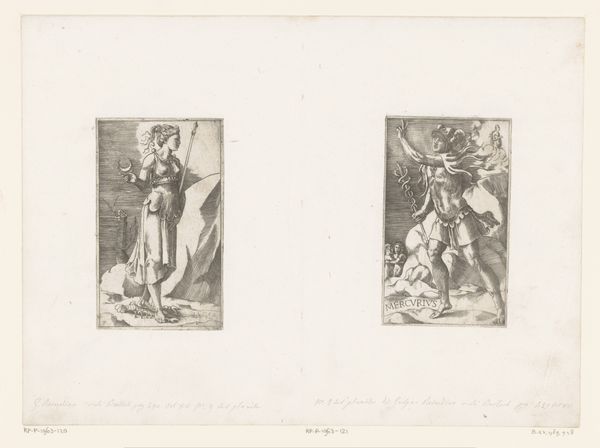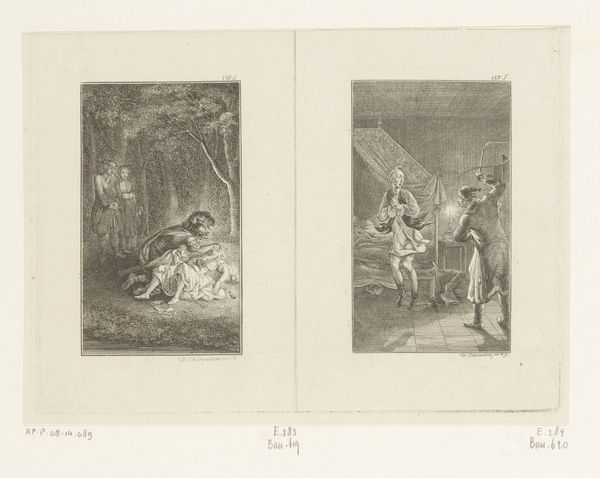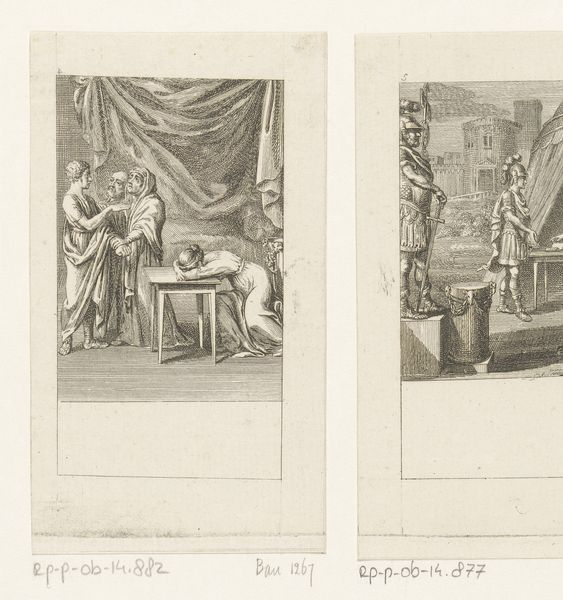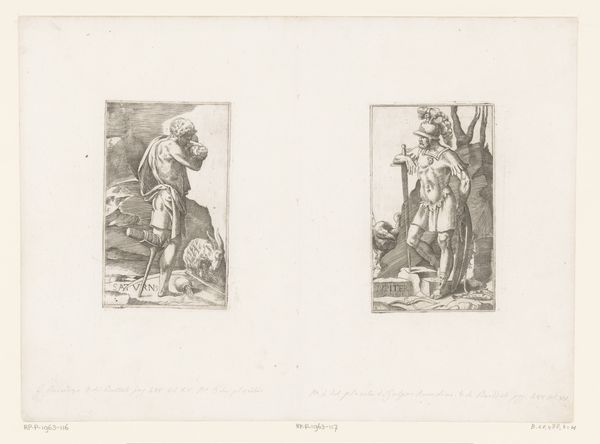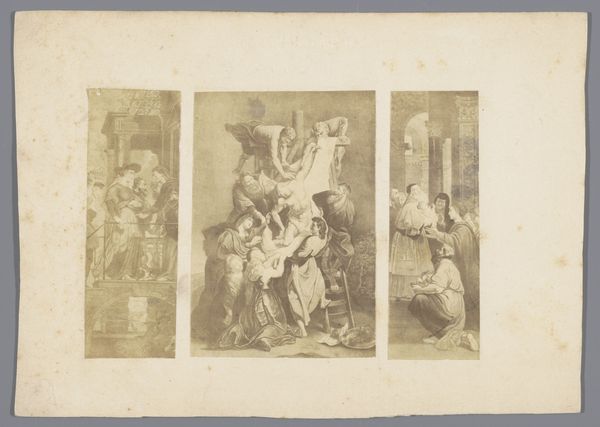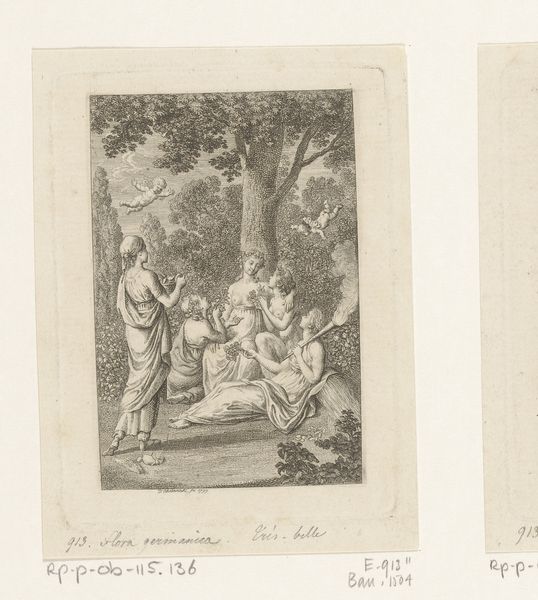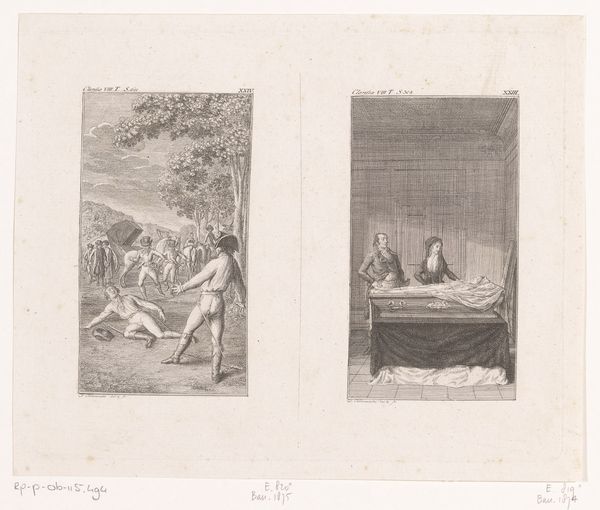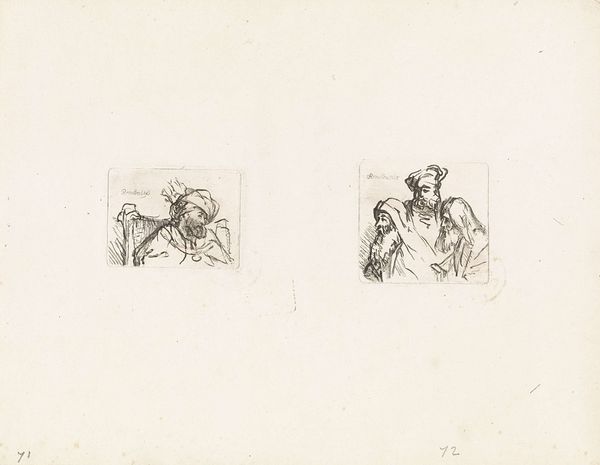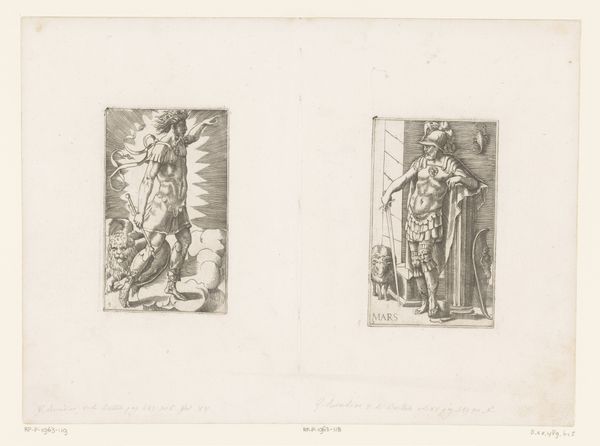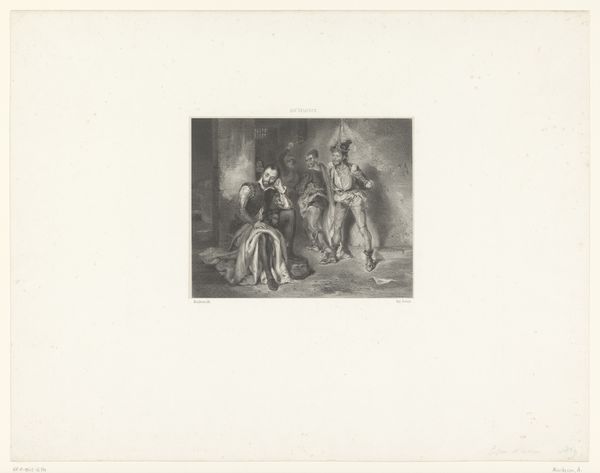
Maaltijd te Emmaüs, Heilige Hieronymus en de Presentatie in de tempel 1659 - 1661
0:00
0:00
drawing, paper, ink
#
drawing
#
narrative-art
#
baroque
#
paper
#
ink
#
genre-painting
Dimensions: height 243 mm, width 360 mm
Copyright: Rijks Museum: Open Domain
Editor: Here we have Moses ter Borch's drawing from between 1659 and 1661, titled "Maaltijd te Emmaüs, Heilige Hieronymus en de Presentatie in de tempel," made with ink on paper, and held at the Rijksmuseum. The three distinct panels create a sense of visual separation, like peering into different rooms. What compositional elements stand out to you in unifying this multi-scene artwork? Curator: The structure of the artwork commands attention. The division into three distinct scenes is key. Note the contrasting handling of light and shadow. The leftmost scene possesses a stark tonal range achieved through the medium of ink, almost mimicking chiaroscuro effects reminiscent of the Italian Baroque. While, to the right, more diffused lighting creates subtle tonal modulations and aerial perspective. The contrast encourages a reading that considers each panel individually and as a series. How does the use of line function to organize this triptych format? Editor: The lines vary in thickness and intensity; the weight seems to define space and form differently in each panel. Is it a change of technique, or does it denote something deeper? Curator: Precisely! Examine the deliberate variation. In the 'Emmaüs' scene, bold strokes build form with clarity. Contrast this with the more ethereal rendering of the central 'Hieronymus'. Here, Ter Borch manipulates line not merely as contour, but as a tool to create depth and atmosphere. It seems the intention is to invoke, perhaps, differing states of worldly being and states of heightened religious emotion or spirituality. Observe how this atmospheric contrast interacts with the other formal elements to invite various interpretations. Editor: I see what you mean now; line and contrast together. Thanks, I’m starting to consider the intentionality in each section’s composition beyond just subject matter. Curator: And seeing that, the real revelation may be in seeing the interplay, as well. It allows for a deeper analysis that considers how form shapes meaning.
Comments
No comments
Be the first to comment and join the conversation on the ultimate creative platform.
